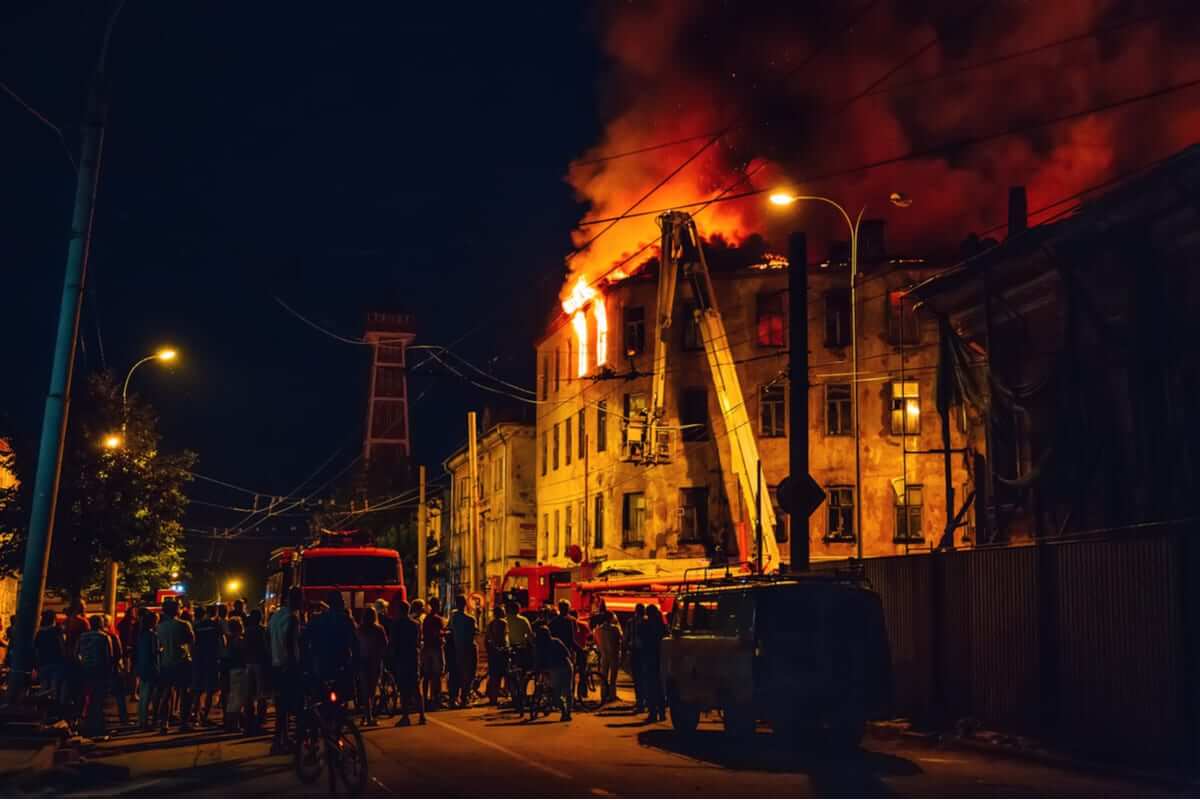- Firm Overview
- Practice Areas
- Testimonials
- Community
- Blog
- FAQ
- Contact
GET A FREE CONSULTATION (702) 680-1111

Rental housing fires are a major inconvenience for both tenants and property owners. As everyone takes steps to recover, the question of fault often outweighs every other issue. Residents must find new homes and replace their personal property. Property owners must make timely repairs to ensure their income continues. As everyone scrambles to restore life-as-usual, the financial and emotional costs increase as does the drive to determine who is legally liable.
In the midst of these challenges, it’s essential to be aware of other concerns that might affect residents and property owners alike. For instance, the safety of Vegas streets during the COVID era has been a topic of discussion, as well as the repercussions of the MGM data breach. Moreover, understanding local regulations, such as Nevada’s dog bite laws, can be crucial for both tenants and landlords.
When a fire causes serious injuries or death, establishing liability becomes a matter of urgency. Landlords and tenants point fingers at one another. Fire department officials, insurers, claim investigators all ask questions and seek to find answers.
If you or a family member have sustained injuries due to a fire, you need a legal representative who will take immediate steps to protect your legal rights. Throughout her career as an attorney, Gina Corena & Associates have fought aggressively for injured Nevada residents. Gina and her tough trial attorneys have relied on the law to recover millions of dollars in damages for their clients.
Many people often have a stake in the outcome of a fire investigation. Property owners need to have their building damage claims paid. Tenants want their personal property replaced. If a resident is seriously injured, they seek money for medical bills, lost income, pain, suffering, and physical impairments. When a fatality occurs, the survivors often present a wrongful death claim. Other parties and entities need to know the answers as well
Both property owners’ insurers and the tenants’ insurers need to know how a fire started. If the evidence confirms that an insured committed arson, fraud, or other acts that void coverage, insurance companies have no duty to pay. If a liability insurer must consider paying damage claims, their decisions are contingent upon the evidence. The evidence also helps insurers determine their legal right to file a subrogation claim or lawsuit against the person or entity that caused the fire.
Evidence is the key to figuring out who did what. County fire departments investigate fires and publish their findings in a formal report. Insurers, independent claims adjusters, and others conduct their own investigations on behalf of the people they represent. They do site inspections, take photos, and interview witnesses.
When someone sustains fatal injuries or fire investigators suspect arson, law enforcement officials conduct criminal investigations. Each entity conducts their own investigation, but they all rely on county fire investigators for their opinion on what caused the fire.
Once insurance companies, claims adjusters, and their legal representatives have the evidence they need, they decide who is legally liable. Each party evaluates evidence based on their own perspectives and purposes. When an insurer, attorney, or court determines liability, their decisions consider fire and criminal reports, but they decide the legal liability issues independently. Ultimately, liability decisions rely on a longstanding negligence formula.
Those who must determine liability examine these issues, but often it is not this simple.
The above negligence formula provides a basic framework for assessing liability for fire damages and other occurrences. Determining that a duty is owed and breached involves additional considerations.
In Nevada, a property owner isn’t automatically liable for damages or injuries unless he/she knew or should have known that a hazardous condition existed. A property owner can’t plead ignorance to an existing hazard if it existed for an extended period or a tenant reported it. An owner is liable for damages caused by hazards that they could have reasonably detected during a routine inspection. Hazards sometimes include defective or aging wiring, faulty appliances, no smoke alarms, improper fire exits, and other conditions.
If a property owner hires a subcontractor to perform maintenance, repair, inspection, and other duties, the contractor and his employees often share liability for an adverse event. Some subcontractors work without a written agreement. Others sign a contract that outlines both their work responsibilities and their legal duties.
Written subcontracts often contain clauses that require subcontractors to defend a property owner and indemnify them for losses that are related to the subcontractor’s responsibilities. The Nevada Supreme Court decided that indemnification clauses require that a contractor must indemnify for only those damages they caused.
A lease agreement is a contract between a property owner and the tenant. They often contain indemnification clauses. If the evidence shows that a tenant caused a fire, their lease agreement may require that they reimburse the property owner for any damages the building owner or his insurer must pay because of a fire.
Some owners eliminate personal responsibility for injuries and damages by incorporating as a property business under a Limited Liability Corporation. This often limits the liability for damages to general liability, excess, and umbrella insurance policy proceeds and corporate assets.
Under Nevada’s Comparative Negligence Statute more than one person can share responsibility for damages. Each negligent person or entity owes damages based on their negligence percentage. A tenant or property owner who is partially responsible can still collect damages if their negligence doesn’t exceed 50%.
The December 2019 Alpine Motel fire in Las Vegas is a classic example of how complex a fire investigation can be. A CNN story reported that smoke was pouring out of the building when the fire department arrived and residents were jumping out of windows. Firefighters found a fire in an apartment. They also found evidence that the fire was related to a tenant’s attempt to heat an apartment using their oven.
Six people died and 13 others sustained injuries. The evidence documented on the night of the fire should have been critical to determining fault. As in many situations, liability for a fire and the resultant injuries is often more complicated than that. The Las Vegas Review-Journal has followed the story since it occurred. They and other media sources have reported numerous allegations that may affect the final liability assessment.
Months have passed and investigators are still sorting out the facts. The police department is conducting a criminal investigation. The Las Vegas Fire Marshal acknowledged that his office hadn’t inspected the building in over 32 months. Tenants have not yet received permission to retrieve their personal belongings. While these facts are extreme, they are examples of the types of issues that can make determining liability a complicated process.
As you recover from fire-related injuries, you encounter numerous challenges. You shouldn’t try to handle them on your own. Medical bills, lost income, and daily living expenses escalate at a time when you have few resources to cover your losses. Negligent property owners and their insurance companies rarely pay damages without a fight.
At, Gina Corena & Associates, our lawyers have always worked hard to recover damage for our injured clients. Let us determine if we can do the same for you. Call us at 702-680-1111 or complete our Contact Form. We’ll schedule a free consultation to discuss your legal options.

As founder of Gina Corena & Associates, she is dedicated to fighting for the rights of the people who suffer life-changing personal injuries in car, truck and motorcycle accidents as well as other types of personal injury. Gina feels fortunate to serve the Nevada community and hold wrongdoers accountable for their harm to her clients.